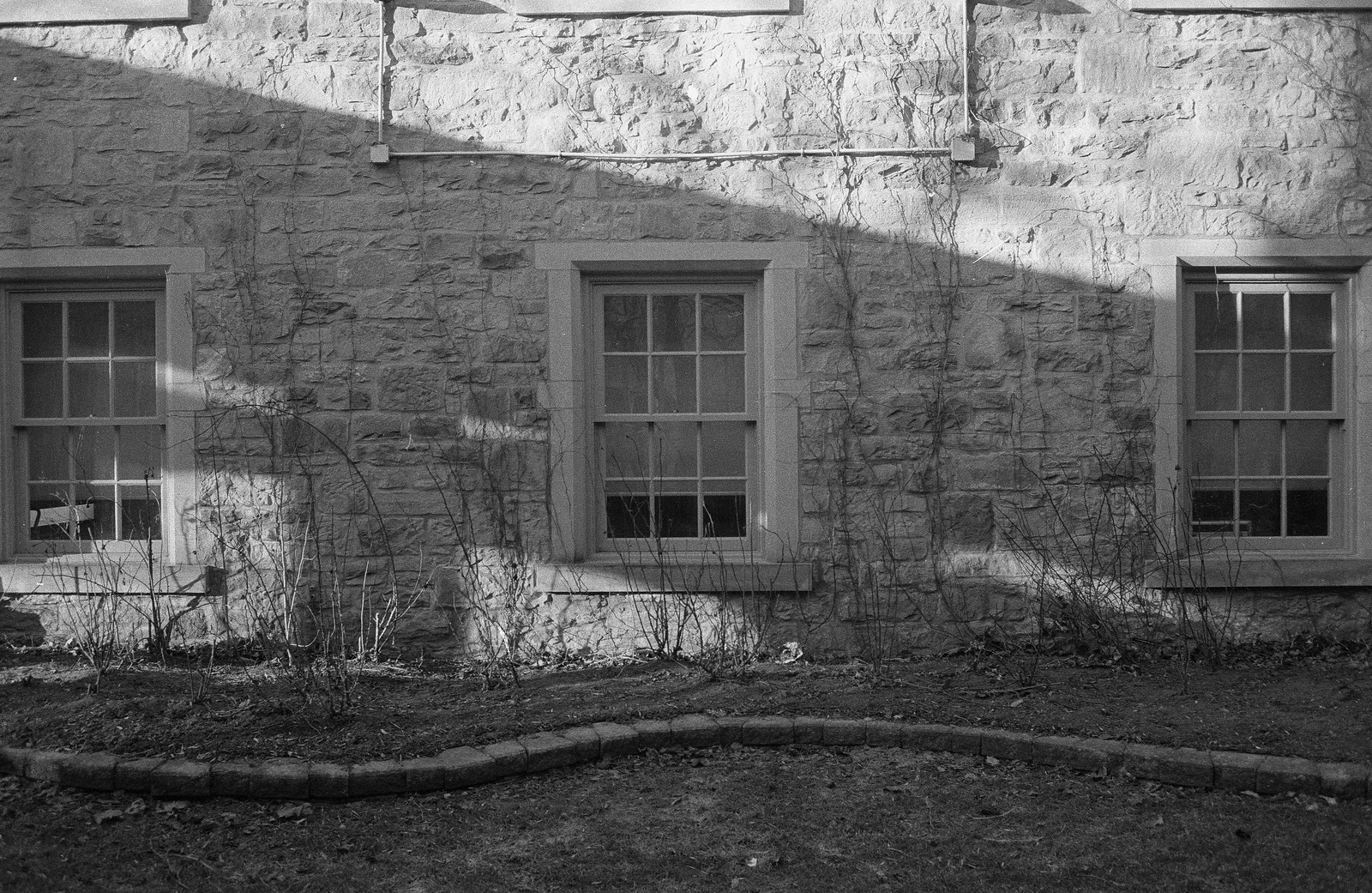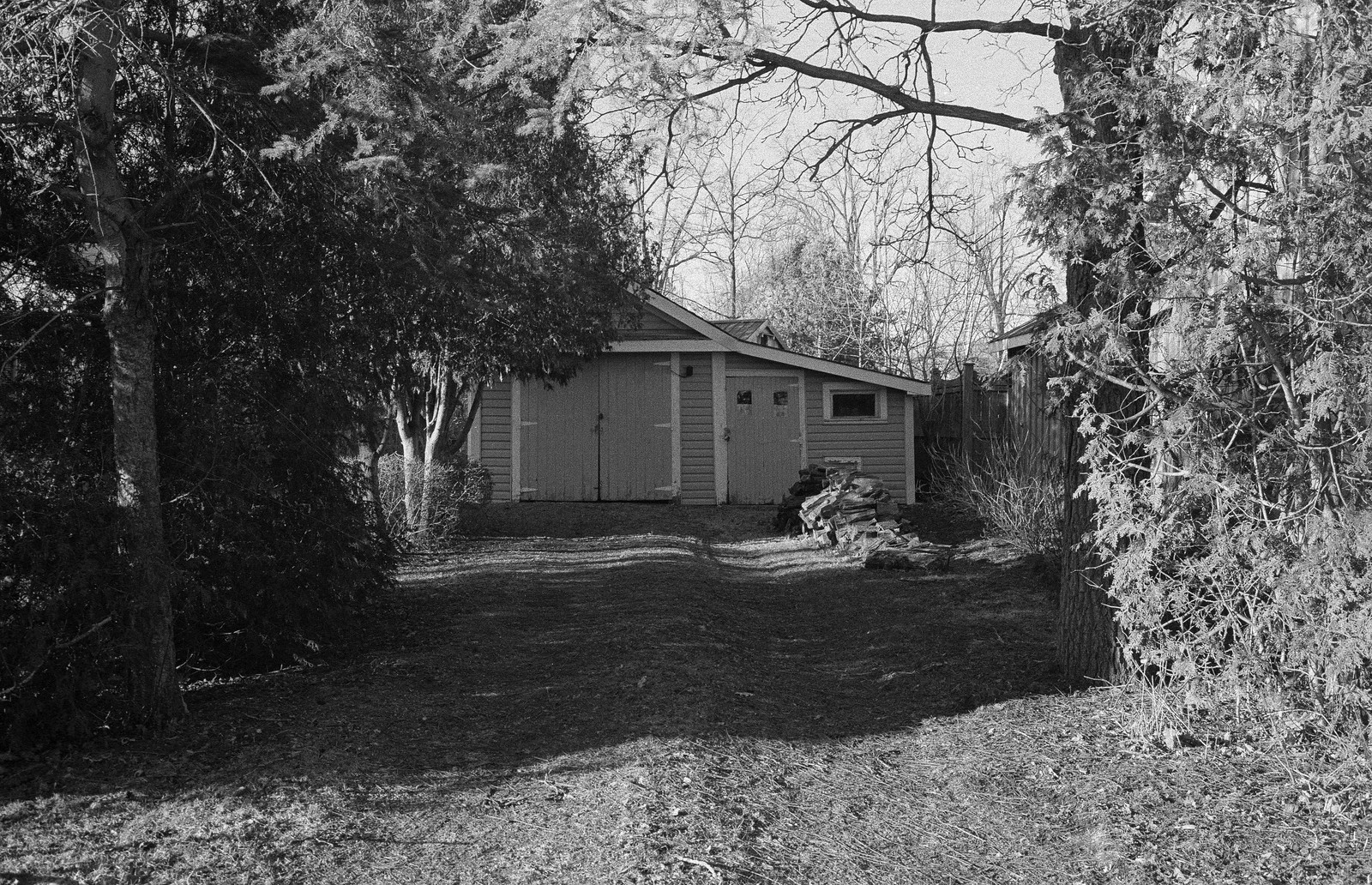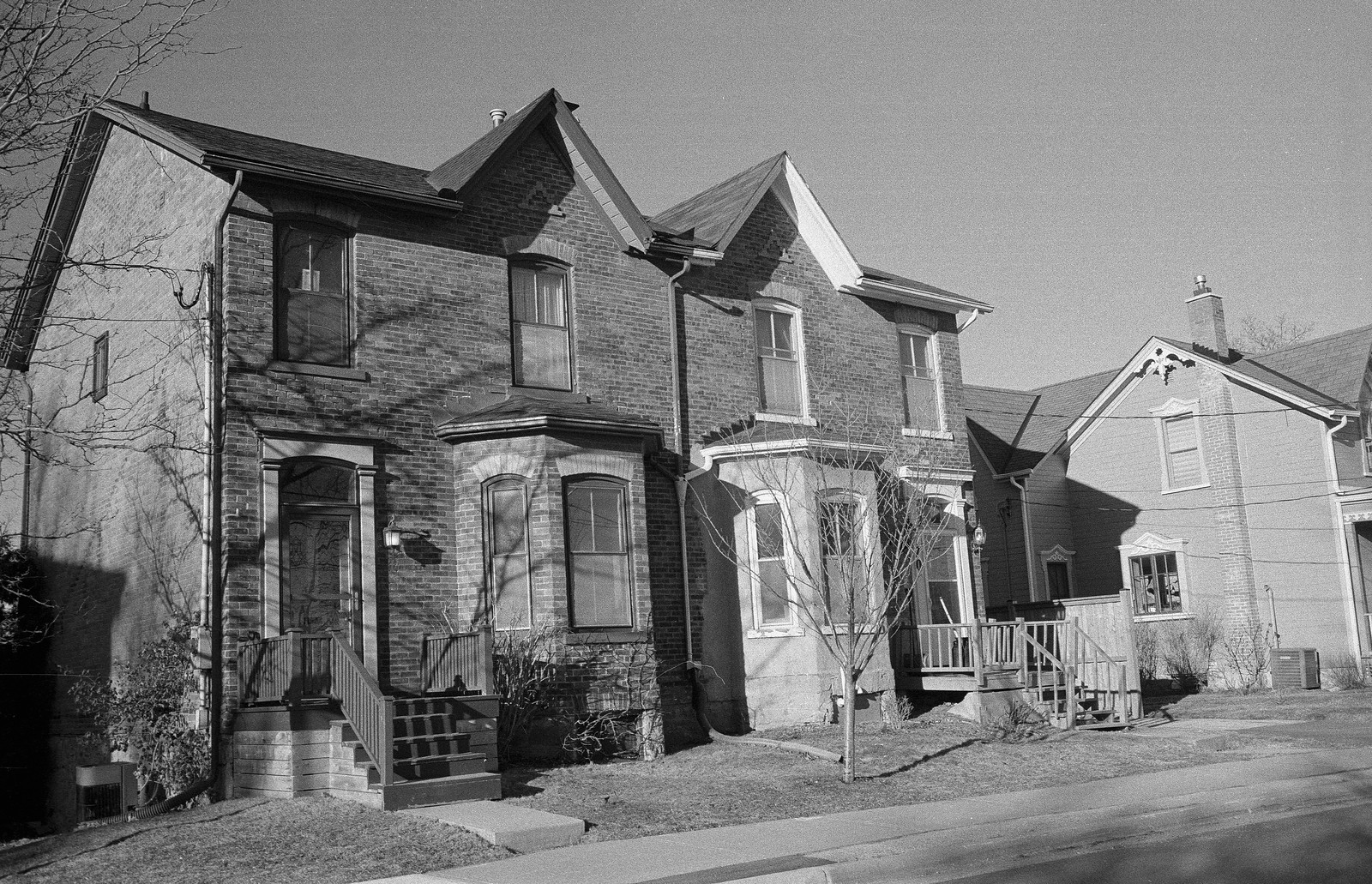When it comes to Olympus cameras, especially the OM-System, I sadly lack in my experience. Thankfully I’ve had the chance to run with both the original OM-1 and the advanced OM-4. Meaning there are only a couple of these amazing cameras that I have yet to have any experience with. In a reoccurrence of GAS, I happened upon a trade where I swapped a Pentax for a beautiful OM-2n. And after hearing all the good things about these cameras from two friends, Bill and Leslie, I knew I had a winning SLR. And while the OM-2n isn’t a primary camera in my daily use, I can see it becoming so after some servicing.

Camera Specifications
Make: Olympus
Model: OM-2n
Type: Single Lens Reflex
Format: 135 (35mm), 36x24mm
Lens: Interchangeable, Olympus OM-Mount
Shutter: Electronic Focal Plane Shutter, 120″ – 1/1000″ (Automatic)/1″ – 1/1000″ (Manual) + Bulb
Meter: 2x Silicon Blue Cells for Direct Film Plane metering + 1x CdS cell for manual exposure.
Year of Manufacture: 1975-1979 (OM-2), 1979-1984 (OM-2n), 1984-1988 (OM-2SP)


Background
When Olympus introduced the OM-System in 1972, they never intended the OM-1 to be a single entry into the system. But could lightning strike twice? Olympus certainly thought so, and in 1974 at Photokina showed off their prototype of the OM-2. What made the OM-2 unique is that while it showed the same physical dimensions as the OM-1, it would only be slightly heavier. Unlike the OM-1, which was a fully manual camera, the OM-2 offered a level of semi-automatic exposure control. The OM-2 would maintain full compatibility with the existing OM accessories, motor drives, hot-shoes, lenses, and databacks. But the OM-2 offered something that not even the semi-automatic cameras of the era did, TTL metering off the film plane. The OM-2 boasted a pair of Silicon Blue Cells (SBC) would read how the light through the lens that falls onto a digital pattern (think Digital camouflage (CADPAT) or a QR Code) on the shutter curtain. These did that the instant the aperture closed and the mirror went up, and then before the shutter opened would pick the appropriate speed. The OM-2 shutter offered speeds between 60 seconds and 1/1000 second (stepless). Olympus documents referred to it as Auto Dynamic Metering (ADM). The system would only work when the camera ran in aperture priority mode, under the metered manual the OM-2 was no different from the OM-1 with a pair of CdS cells and a match needle. This difference also meant that the camera would produce different metering readings depending on the mode. In 1979 Olympus released two updated versions, the OM-1n and OM-2n. While some of the updates were cosmetic with a redesigned film advance lever. The OM-2n had the reset function moved to the top plate and integrated with the on/off/mode switch; contacts were added to allow direct communications with the Olympus RecordData Back. The shutter was improved with the slow shutter speed doubled to 120 seconds, and the OM-2n could accept the new v.4 hotshoe. Production of the OM-2n ceased in 1984, replaced by a camera that would be an OM-2 in name only. The OM-2SP (or OM-2S) would take the basics of an OM-2 with the centre-weighted meter and ADM and put the guts of an OM-4 into the chassis. The OM-2SP, as a result, offered up full auto-exposure along with semi-automatic aperture priority and metered manual. Production of the OM-2SP ended in 1988. While the OM-2n never attracted the same cult status as the OM-1n, it still was a stepping stone in the great line of SLRs.


Impressions
At forty yards it’s nearly impossible to tell the difference between the OM-1 and OM-2 and even their ‘n’ varients. The camera body itself is the same dimensions as the OM-1 only slightly heavier. If you’re familiar with an OM-1 then getting to know the OM-2 is super easy as many of the controls are in the same spot. Even with a Winder 2 installed, the camera remains lightweight and makes for a great everyday carry camera or travel companion when size is of an issue. I wish I had an OM-2n when I went to Europe back in 2015, it would have made a great travel SLR along with my a6000, plus I could take a couple of lenses along for the ride and get an adapter. The control layout, as I mentioned earlier, takes all the same notes as the OM-1. The shutter speed dial is located on the lens mount, but running the camera in aperture priority mode makes it a non-issue for a Nikon guy like me who is used to the shutter speed on the top plate. The On/Off switch remains on the top plate but now doubles as a mode switch, with off being centred and manual and auto being on either side. As I have the OM-2n, the check/reset function is also connected with this switch. So if the camera loses power and needs a reset, the function is right at my fingertip. The right side of the camera, like the OM-1, is a little crowded. The ISO dial remains in its traditional place; the setting is now a secondary function; you have the pull the knob up to set the ISO. The main function of the dial is EV compensation. Just make sure to set it back to the zero mark after setting your film speed. You have a functional range of ISO-16 to ISO-1600. Also if you’re running with the winder, the power/mode switch is on the bottom of the winder.


Experiences
Despite not having used an OM system since I reviewed the OM-4, I took to the OM-2n almost instantly. While my copy of the camera came with a ‘non-working’ lightmeter, it turns out that only the manual exposure setting doesn’t work, thankfully the automatic function does work. I do need to send the camera into Service Camera Pro to get the issue addressed, and by the time you’re reading this review, the camera is probably already in Quebec and might even be back in my hands. The camera itself is so light that you can carry it all day long with little strain on your back, I run the OM-2n with the Winder 2 on the Peak Design Leash style strap without any trouble. Loading the camera is super easy, make sure to manually set the shutter speed or open up that aperture so that the delay isn’t too long before the film advances. With the camera in automatic mode, you can focus on getting the shot, and with the aperture being distance from the shutter speed control, it’s easy to switch between focus and aperture function. The only trouble is that I have little feedback in the viewfinder on what my shutter speed is, but generally I’m shooting appropriate film for the lighting condition. Aside: The OM-2n does have a shutter speed meter in automatic mode, since my copy was not working at the time this scale did not engage, it now does. In manual mode you have the same match-needle system lifted directly from the OM-1, which while small it no smaller than what you get in the Nikon F2 Photomic. And while the viewfinder isn’t the brightest out there, in daylight conditions it works. Rewinding the film is also simple, especially with the rewind switch being on the front of the camera. Mounting lenses is easy, with the locking switches being on the lens itself, rather than crowding the small body itself.


Optics
I’ve talked on Zuiko optics before on both SLR and fixed lenses cameras. And honestly, despite Olympus not being considered among the big players in the industry, their optics could easily stand up to Nikon and Canon. The best part is that if you have any OM-Mount lenses from any OM series SLR, you can run them without any trouble on the OM-2, even in automatic mode. And the lens you get with your OM-2 will work on any OM series SLR. And many won’t break the bank account; a good starter kit can include the 50mm f/1.8, 28mm f/3.5, and 70-150mm f/4. Additions can include the 35mm f/2.8 and short telephoto, a 135mm for example. The 28mm f/3.5 and 70-150mm f/4 are under 100$ on the used market and certainly won’t disappoint. In my case, I got a Vivitar Series1 70-210mm f/3.5 for free from my good friend Bill Smith. I also blame Bill for selling me on the OM-System as a permanent addition to the toolkit.


Lowdown
If you have an OM-1, honestly, you probably can add an OM-2 to your kit. The same could be true in reverse. The OM-2 is one of those cameras that I never thought I would want or need, and while the second part isn’t true, I have plenty of semi-automatic manual focus small format SLRs. The OM-2n is just a wonderful piece of equipment that will certainly make for a good compact, limited system camera to take on trips, or when size is an issue. And while mine does need some service done to the camera, the CdS meter isn’t working, and I can’t get it to come out of automatic mode. I feel after the camera gets back, I can put it into more regular use for future film reviews, travel, heck it might even come to Disney in a couple of years. In closing, you don’t need an OM-2n, but you probably will be wanting one, especially if you have an OM-1n. In full disclosure, the OM-System is a dark blackhole, I went from having a camera and a single lens to having a camera and every lens and more that I think should be in a kit. Yeah.


Further Reading
Don’t just take my word on the OM-2, you can check out the reviews by other awesome camera reviewers!
Mike Eckmann Dot Com – Olympus OM-2 MD review
Casual Photophile – Olympus OM-2n Review
35mmc – 5 Frames with the Olympus OM-2n
Chris Chinnock Photography – Olympus OM-2n Review
Simon Hawketts’ Photoblog – Olympus OM-2 Review
120 Studio – Olympus OM-2/OM-2n Review
Attempts at 35mm – Olympus OM-2n Review